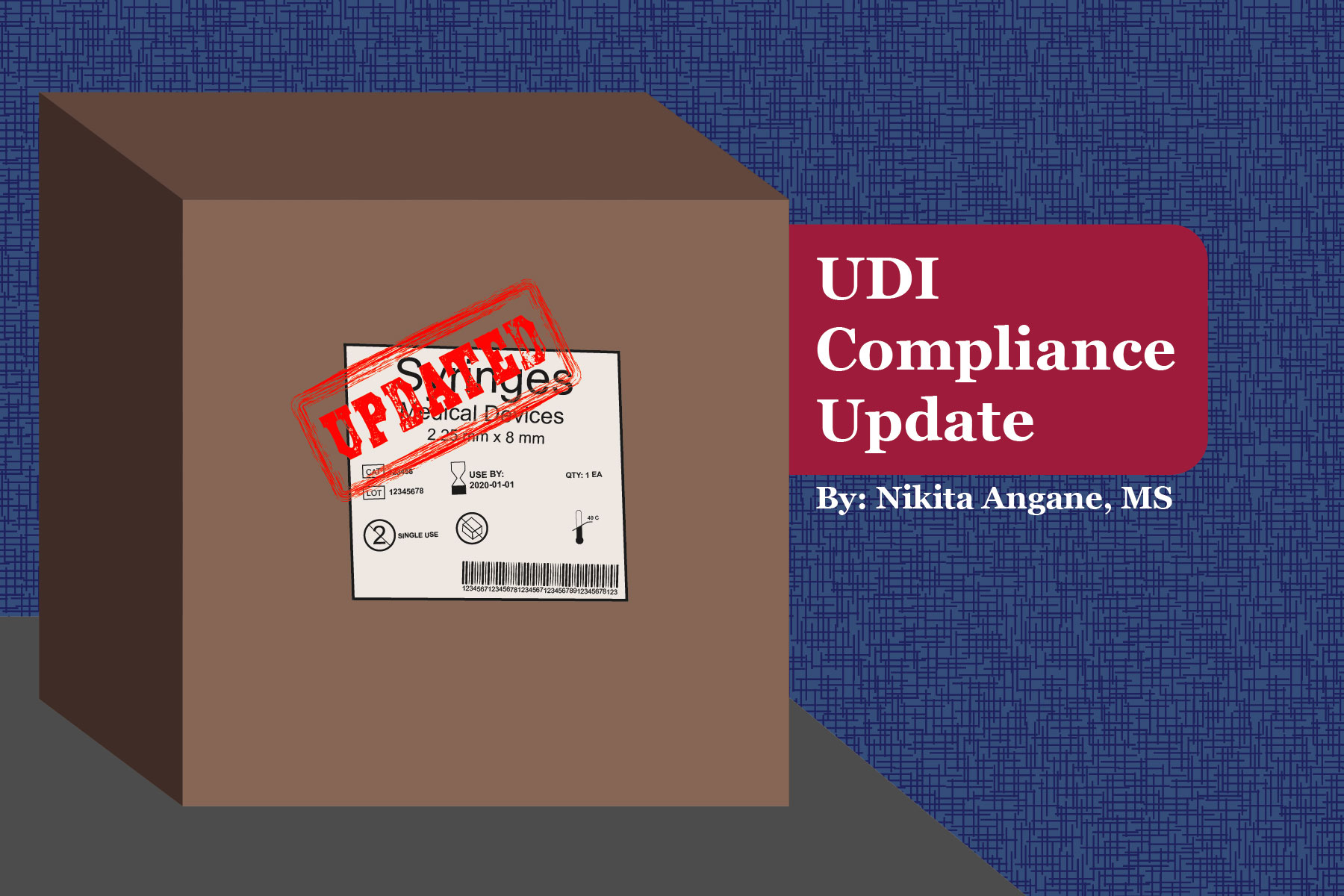The UDI Rule requires a device to bear a UDI on its label and packages. Special labeling requirements apply to standalone software regulated as a device. The UDI Rule also requires that data pertaining to the key characteristics of each device required to bear a UDI be submitted to FDA’s GUDID.1
FDA’s Unique Device Identification rule was designed to identify devices through its distribution and use. A phased implementation strategy is being followed, which began in September 2014 through September 2020.1
The compliance dates established for class I and unclassified devices, other than implantable, life-supporting, or life-sustaining (I/LS/LS) devices were:1
- September 24, 2018, for the following requirements:
o Standard date formatting
o Labeling, and
o Global Unique Device Identification Database (GUDID) data submission and
- September 24, 2020, for direct mark requirements.
FDA realizes that because of the COVID-19 crisis, the industry is scrambling to meet the supply shortages, and hence does not intend to enforce the standard date formatting, UDI labeling and GUDID data submission requirements prior to September 24, 2022.1
The compliance date for direct marking of class III and class II non-sterile devices was Sept 24, 2016 and September 24, 2018, respectively. The manufacturers were not required to comply with the UDI requirements until 3 years after the labeling compliance date. However, in its latest guidance document, FDA mentions that it does not intend to enforce UDI Direct Mark requirements when the UDI can be obtained from other information which is directly marked on the device.1
The direct mark compliance dates for class I and unclassified devices is Sept 24, 2020. However, due to the pandemic and after realizing the cost to remediate existing devices in inventory to add a direct mark, FDA does not intend to enforce UDI direct mark requirements prior to Sept 24, 2022.1
Additionally, after September 24, 2022, FDA does not intend to enforce UDI direct mark requirements for finished class I and unclassified devices, that were manufactured and labeled prior to September 24, 2022, and that remain in inventory, when the device’s UDI can be derived from other information directly marked on the device.1
Need help with your UDI labeling? Call us today at 248-987-4497 or email us at info@emmainternational.com.
1FDA (July 2020) Unique Device Identification: Policy Regarding Compliance Dates for Class I and Unclassified Devices and Certain Devices Requiring Direct Marking retrieved on 07/01/2020 from https://www.fda.gov/media/110564/download






